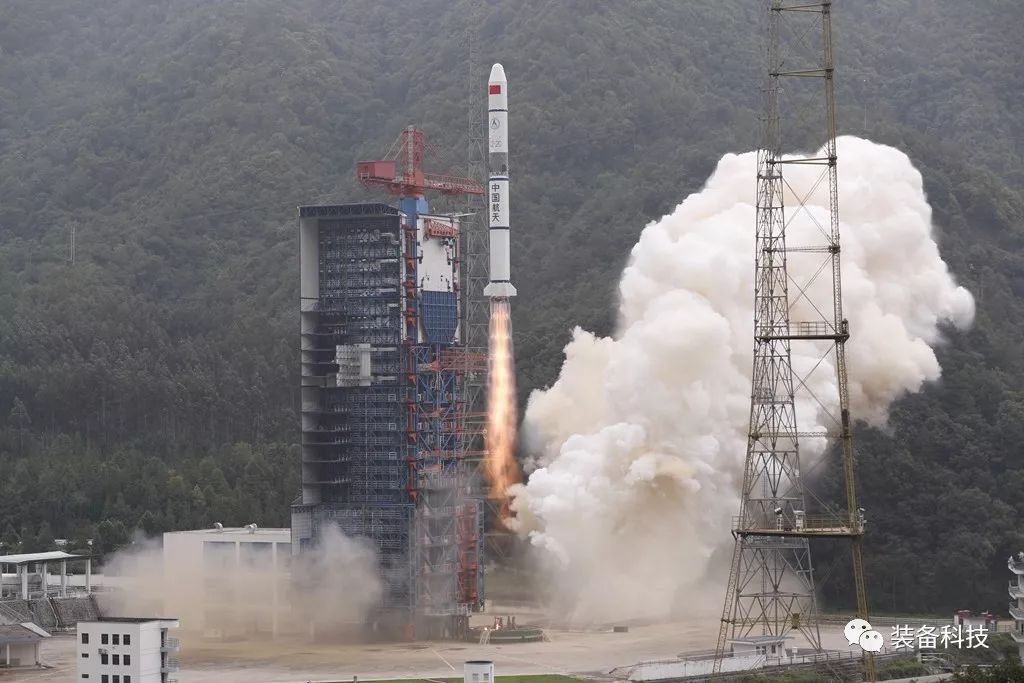Featured image credit: CCTV
Lift Off Time | July 19, 2021 – 00:19 UTC | 08:19 BJT |
|---|---|
Mission Name | Yaogan-30-10, three Chinese reconnaissance satellites |
Launch Provider | China Aerospace Science Corporation (CASC) |
Customer | Chinese Ministry of National Defense |
Rocket | Long March 2C/E |
Launch Location | LC-3, SLS-2, Xichang Satellite Launch Center, China |
Payload mass | Unknown, a maximum of 3,850 kg (8,500 lb) based on orbital parameters |
Where did the satellites go? | ~610 km low-Earth orbit (LEO), ~35.0° inclination |
Did they attempt to recover the first stage? | No, this is not a capability of the CASC |
Where did the first stage land? | It crashed on land in North-West China |
Did they attempting to recover the fairings? | Yes! The CASC attempted fairing recovery for the first time, outcome TBD |
Were these fairings new? | Yes |
This was the: | – 1st fairing recovery attempt by the CASC – 57th launch of a Long March 2C – 23rd Chinese launch of 2021 – 67th orbital launch attempt of 2021 (65th successful) |
Where to watch | If available, a replay will be listed here |
How did it go?
The China Aerospace Science Corporation successfully launched 3 Yaogan-30-10 reconnaissance satellites into a 610 km low-Earth orbit. The trio of satellites were launched on the Long March 2C rocket, from Xichang Satellite Launch Center, in China. For the first time for the CASC, the Long March 2C flew with a new upgraded fairing. The fairing deployed a parachute at a high altitude, similar to SpaceX’s fairing halves; however the recovery outcome is unknown.
Yaogan Satellites
As with most reconnaissance satellites, very few specifics of the actual satellites are known. However, the Chinese government has released some information about the Yaogan constellation. Currently, there are 87 Yaogan satellites in a variety of orbits, ranging from 35° to 100° and orbital altitudes from 480 km circular orbits to 1,200 km eccentric orbits. The Yaogan-30-10 mission is a follow up to the following missions:
| Mission | Date |
| Yaogan-30-01 | September 29, 2017 |
| Yaogan-30-02 | November 24, 2017 |
| Yaogan-30-03 | December 25, 2017 |
| Yaogan-30-04 | January 25, 2018 |
| Yaogan-30-05 | July 25, 2019 |
| Yaogan-30-06 | March 25, 2020 |
| Yaogan-30-07 | October 26, 2020 |
| Yaogan-30-08 | May 6, 2021 |
| Yaogan-30-09 | June 18, 2021 |
The Yaogan constellation is a Chinese reconnaissance constellation. According to Chinese media, the satellites are used for scientific experimentation, surveying land, assessing crop yields, and monitoring disasters; the trio of satellites launched on the Yaogan-30-10 mission will primarily be used for tracking and monitoring fishing vessels. However, the satellites are likely also used for reconnaissance signal intelligence purposes.

While in the same constellation, not all Yaogan satellites use the same instrumentation. Some of the Yaogan satellites are equipped with a synthetic-aperture radar (SAR). SAR uses the motion of the radar to create a 2D image, or a 3D reconstruction, with a higher resolution than if the sensor was stationary. It is unknown if Yaogan-30-10 satellites will use SAR, or if they will use other technology that is classified.
Long March 2C
The Long March 2C is a two stage medium-lift launch vehicle, with an optional third stage, derived from China’s Long March 2B vehicle. It is able to put up to 3,850 kg into low-Earth orbit, and up to 1,250 kg into geostationary transfer obit (GTO).

First Stage
The first stage has 4 open cycle YF-21C engines. Each engine runs on dinitrogen tetroxide (N2O4) and unsymmetrical dimethylhydrazine (UDMH), producing 740 kN of thrust each, with a specific impulse (ISP) of 260 seconds. Overall, the first stage produces 2,960 kN of thrust and carries 182,000 kg of propellant. The first stage is 25.72 meters tall, and 3.35 meters in diameter.
Second Stage
The second stage runs on a single YF-24E engine, which contains 1 main YF-22E engine for thrust, and 4 YF-23C attitude control thrusters. The main engine produces 816 kN of thrust and the attitude control thrusters each produce 47 kN, and both run on N2O4 and UDMH. The main engine’s ISP is ~300 seconds, and the attitude control thrusters have an ISP of 289 seconds. The second stage is 7.75 meters tall, 3.35 meters in diameter, and carries 162,700 kg of propellant.
Optional Third Stage
The third stage contains one 125 kg solid motor that produces 10.78 kN of thrust. The motor uses Hydroxyl-terminated polybutadiene (HTPB).




